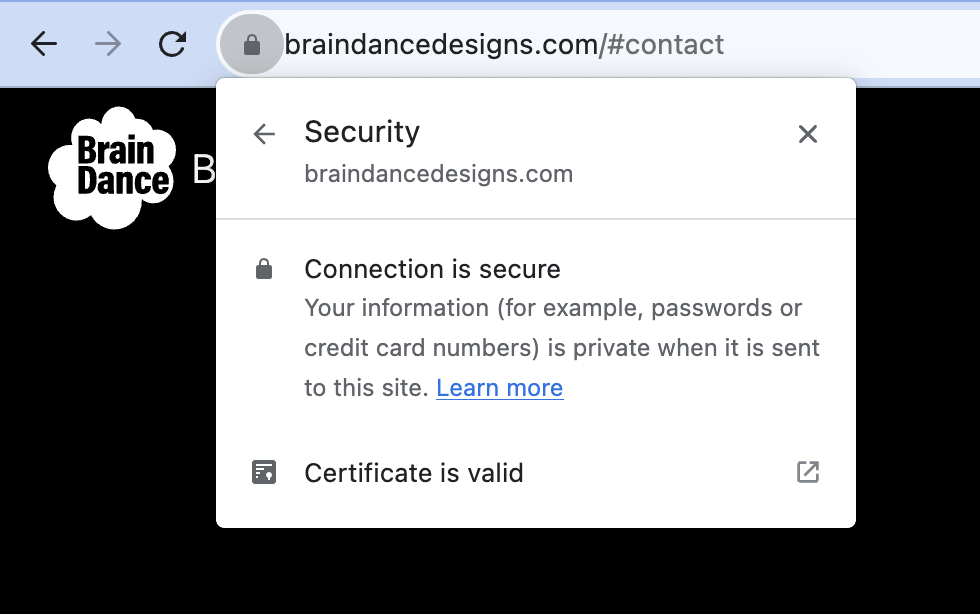
Nerd Rating:
Your Website May Be Scaring Your Customers Away
Your Website May Be Scaring Your Customers Away
In today's rapidly evolving digital landscape, what was once considered secure may no longer be enough. When your website was originally written, it may have been just fine without any extra security measures. Those were simpler times when the threats were fewer and the need for robust security was less pressing. However, the rise in cyber threats, the complexity of attacks, and the ever-changing standards of internet safety have shifted the playing field. Most people are reluctant to take chances with unfamiliar websites and may just leave rather than risk being hacked. In this article, we'll explore the risks of an insecure website and how you can enhance your site's security for little or no cost using ZeroSSL.com.
Many people are reluctant to take chances with unfamiliar websites and may leave rather than risk being hacked.
Note: I have not been compensated by ZeroSSL in anyway, I just like their product.
The Risks of an Unencrypted Website
- Data Theft: Without proper security, sensitive data such as credit card numbers, passwords, and personal information can be easily accessed by malicious hackers.
- Loss of Customer Trust: If your customers feel that their information is not safe, they may choose to avoid your site altogether.
- SEO Penalties: Search engines like Google prioritize secure sites. An insecure website might lead to lower rankings and reduced traffic.
- Legal Ramifications: Depending on the data breach's severity and the regulations in your jurisdiction, you might face legal penalties.
What is SSL?
SSL, or Secure Socket Layer, is like a virtual handshake between a website and its visitors. Imagine having a conversation with someone and wanting to ensure that no one else can overhear what you're saying. SSL does this for websites by creating a secure connection between the user's web browser and the website's server. When this connection is established, any information shared between the user and the site is encrypted, meaning it's scrambled in a way that only the website and the user can understand. This encryption makes it much more difficult for hackers or other prying eyes to intercept and read the information, be it passwords, credit card numbers, or personal details. In short, SSL helps keep online conversations private and secure.
What is ZeroSSL.com?
ZeroSSL.com is a platform that offers free SSL certificates to make your website secure. SSL (Secure Socket Layer) certificates encrypt the data between the user's browser and the web server, ensuring a secure connection.
How to Secure Your Site with ZeroSSL.com
-
Create an Account: Visit ZeroSSL.com and sign up for a free account. Registration is simple and only requires an email address.
-
Choose a Certificate: ZeroSSL offers various SSL certificate options, both free and premium. Carefully review the features and select the one that best fits your website's needs. For most small to medium-sized sites, the free certificate might be enough.
-
Verify Domain Ownership: ZeroSSL requires you to prove that you own the domain you want to secure. This step is crucial to prevent unauthorized SSL certificate issuance. You can verify ownership using methods like DNS verification, Email verification, or by uploading a specific file to your website. ZeroSSL provides clear instructions for each method.
-
Generate CSR (Certificate Signing Request): Create a CSR containing information about your website and organization. ZeroSSL offers a user-friendly interface to help you generate the CSR without any technical knowledge required.
-
Install the Certificate: Once your CSR is created and your domain ownership is verified, you can download the SSL certificate. This certificate will then need to be installed on your web server. Depending on your hosting provider, this process might vary, but ZeroSSL provides comprehensive guides to assist you.
-
Configure the SSL Certificate: Ensure that all your website's links and content are using HTTPS instead of HTTP. This might require changing some settings on your site or using plugins that help force HTTPS on all parts of your website.
Not Sure How to Proceed? We Can Help
Securing your website with SSL might seem like a daunting task, especially if you're not familiar with the technical aspects involved. While platforms like ZeroSSL.com have made the process more user-friendly, you may still need the assistance of a skilled web developer to make the necessary changes. Not sure how to proceed? We can help. Contact Brain Dance Designs for more information.

- Newer Posts
- Page 2 of 9
- Older Posts
